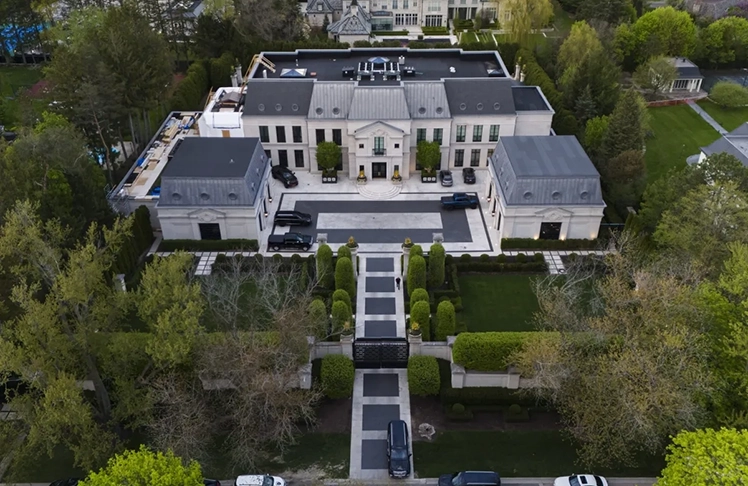
Four inches of rain fell in just a matter of hours in Toronto on Tuesday, yet another summer storm that caused extensive flooding in a major North American city. The deluge not only stranded drivers on freeways that quickly turned into a river, but also left Drake’s Toronto mansion filled with murky floodwater.
The megastar rapper, whose real name is Aubrey Drake Graham, posted a video on Instagram of ankle-deep water rushing through the glass doors of a room in his 50,000-square-foot home. “This better be Espresso Martini,” he wrote in a caption.
Even a house with amenities such as an NBA-size indoor basketball court and a looming 21-square-foot pyramid-shaped skylight doesn’t matter when the water rises.
“I don’t even know why we talk about 100-year storms anymore because that definition seems to have flown right out the window. We’ve had three of them in the last 11 years,” Paul Johnson, Toronto’s city manager, said in a press conference. “The challenge is, much of the city is not designed to handle this amount of water that is coming down.”
While Johnson, the Toronto city manager, was talking more about sewer systems, it apparently includes Drake Manor, too.
Toronto, however, is part of a larger trend happening in North America and around the world.
According to the website Climate Central, billion-dollar weather and climate disasters are happening in the U.S. more frequently and are more costly than ever, due in part to the warming of the planet’s atmosphere. And unusual, extreme weather phenomena are happening in unusual places, including triple-digit temperatures in Portland, Oregon, powerful tornadoes in Wisconsin, baseball-sized hail in South Carolina and flooding in New Mexico.
Those disasters disproportionately affect communities of color: they often are significantly hotter than whiter, more well-off parts of the same cities, lack the infrastructure to handle flooding, and struggle to recover from natural weather disasters.
Drake built the mansion, designed by architect Ferris Rafauli, to stand the test of time. “Because I was building it in my hometown, I wanted the structure to stand firm for 100 years. I wanted it to have a monumental scale and feel,” Drake told Architectural Digest back in 2020. “It will be one of the things I leave behind, so it had to be timeless and strong.”
Flooding is not the same as falling down, of course. But a deluge of this magnitude tends to show just how impermanent some buildings and infrastructure really are.
In the parts of the city where the rainfall was the heaviest, it constituted a hundred-year storm, meaning that, under normal circumstances, there’s a 1% chance of that much rain coming down. But in the climate-crisis era, that kind of statistical definition often feels turned upside down.















